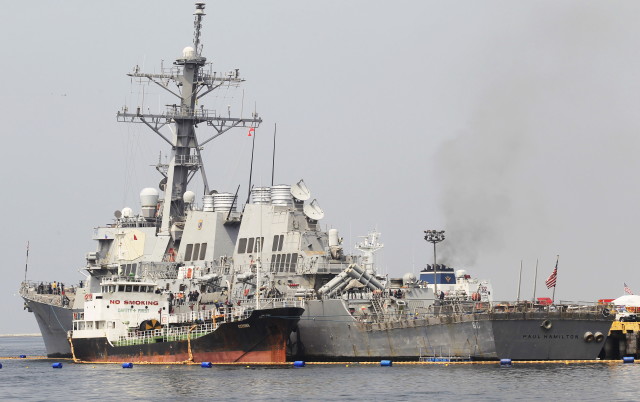Posted September 22nd, 2015 at 2:49 pm (UTC-5)
By Ray Mabus – Secretary of U.S. Navy – Time Magazine
Since the end of World War II, the U.S. Navy has kept international sea lanes open around the world. We’ve protected trade and commerce not just for ourselves and our allies, but for everyone. Today, $9 trillion in goods are traded globally by sea, supporting about 40 million jobs in the U.S. alone and benefiting nearly every consumer on earth. With numbers like that, the health of the world’s economy depends in large part on the United States Navy and Marine Corps.

U.S. Navy destroyer USS Paul Hamilton (DDG-60) is pictured docked at the south harbor in Manila September 8, 2015. (REUTERS)
There is an inarguable link between rising prosperity and civil stability, but that’s just one of the direct benefits Americans enjoy because the U.S. Navy, America’s Away Team, is doing its job across the globe. That presence—on, above and beneath the seas—reassures our allies and deters our adversaries. And, if conflict comes, we will fight and win.
On Sept. 11, 2001, our fleet stood at 316 ships. Fewer than eight years later, despite one of the great military build-ups in American history, the fleet had declined to 278 ships. It’s true our focus in those years was on two ground wars, but our shipbuilding program had been neglected. In the five years before 2009, the Navy put just 27 ships under contract, not nearly enough to keep our fleet from shrinking, and not enough to keep our shipyards going. In the next five years, we put 70 ships under contract.
(read more here)
Secretary of Navy: Why Our Fleet is Growing After Years of Decline
By Ray Mabus – Secretary of U.S. Navy – Time Magazine